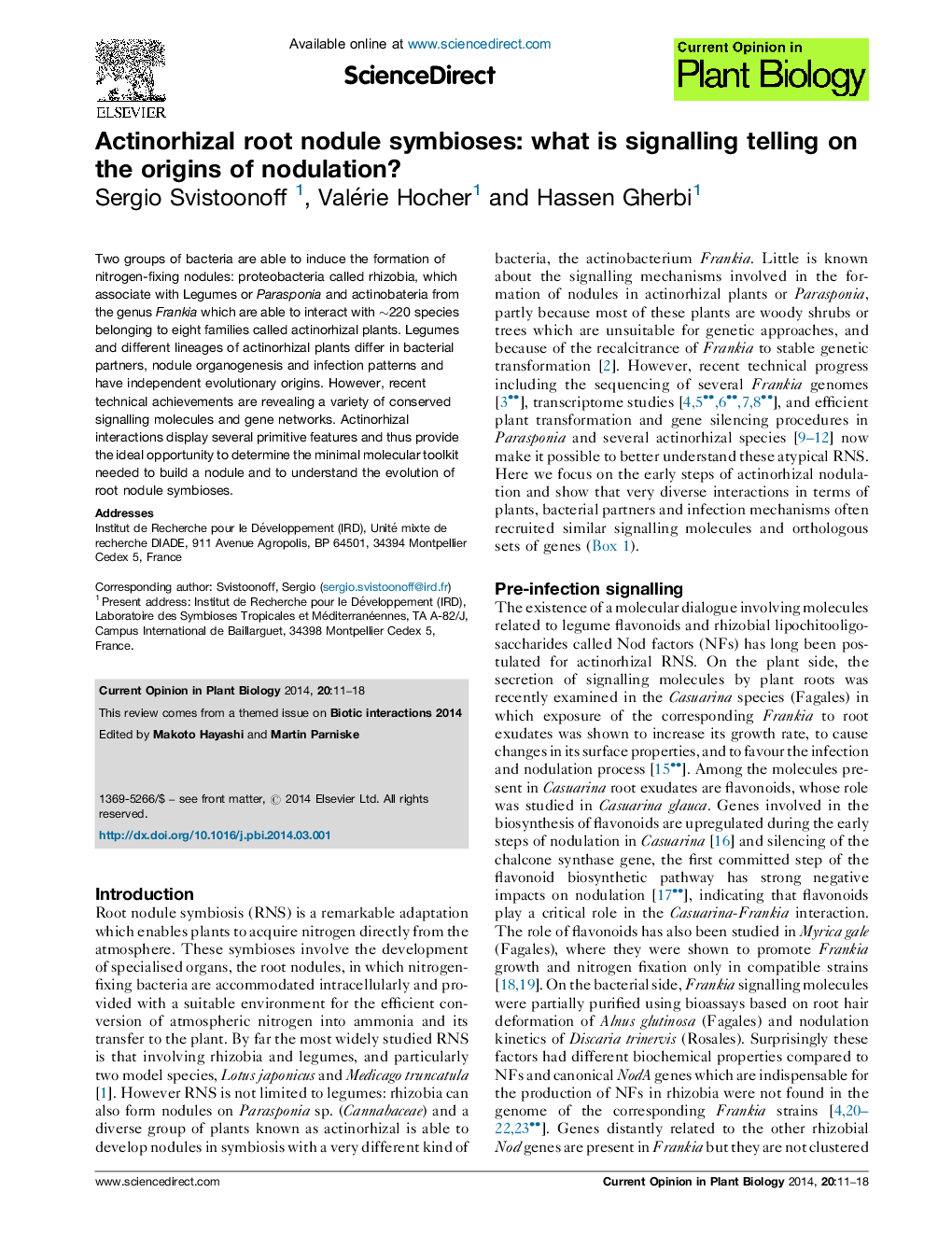| Article ID | Journal | Published Year | Pages | File Type |
|---|---|---|---|---|
| 8381796 | Current Opinion in Plant Biology | 2014 | 8 Pages |
Abstract
Two groups of bacteria are able to induce the formation of nitrogen-fixing nodules: proteobacteria called rhizobia, which associate with Legumes or Parasponia and actinobateria from the genus Frankia which are able to interact with â¼220 species belonging to eight families called actinorhizal plants. Legumes and different lineages of actinorhizal plants differ in bacterial partners, nodule organogenesis and infection patterns and have independent evolutionary origins. However, recent technical achievements are revealing a variety of conserved signalling molecules and gene networks. Actinorhizal interactions display several primitive features and thus provide the ideal opportunity to determine the minimal molecular toolkit needed to build a nodule and to understand the evolution of root nodule symbioses.
Related Topics
Life Sciences
Agricultural and Biological Sciences
Plant Science
Authors
Sergio Svistoonoff, Valérie Hocher, Hassen Gherbi,
